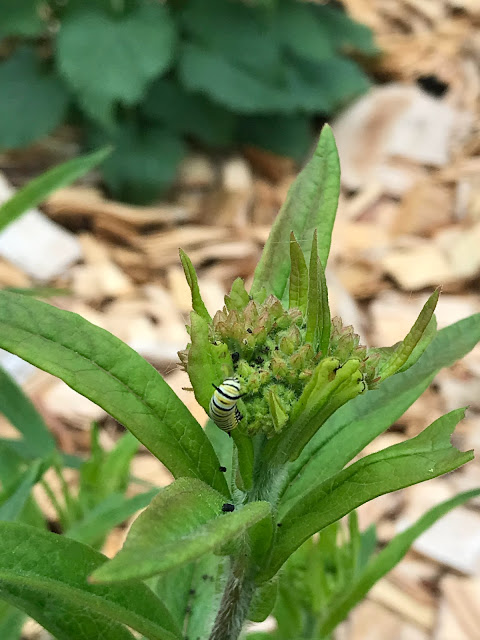A few years ago we decided to remove the majority of our grass in the front yard to make room for pollinator gardens. We removed about 1/2 of the lawn and planted numerous Minnesota natives to feed butterflies and bees. In our backyard we added several native trees to help feed the birds. Immediately we started seeing the benefits of both. The birds come to the trees to nibble on the fruits and the pollinators visit the flowers for pollen and nectar, but this year we were surprised to find this...
While I was up in Northern MN at our cabin a few years back I found a plant growing wild down the road and thought it was interesting. I looked it up to find it's name and whether it was native to the area or not. It's called pearly everlasting and it is a native to MN so I decided to plant it in my front yard. I ordered 3 plants from a local native wildflower nursery and put them in. Two years later (today) I noticed they had spread quite a bit. Three small plants that took up a total of a foot space had now spread to about 4 ft around. I thought that was exciting since I want all of my plants to spread. I went out a couple days ago to water and discovered what looked like dying pearly everlasting. I thought maybe it had some type of fungus or mite since it was covered in a white powdery substance with black flecks and it looked like it had little cobwebs all over the top. I started pulling back the webs and was surprised to find caterpillars inside. By the time I was done counting I found over 2 dozen caterpillars. I rushed to my resources to find out what they were and it turns out we created a home for the American Lady and Painted Lady butterfly larvae.
The pearly everlasting is a host plant. The caterpillars live as individuals in nests made of leaves and silk. Here are some photos of what I found.
This is EXACTLY what we wanted to achieve when we removed our lawn. In our front yard we have three sections with native wildflowers that feed the local pollinators. It's very exciting to see the fruits of our labor.
We also found that the butterfly milkweed we planted is covered in Monarch caterpillars. I didn't expect this. I assumed Monarchs would only lay their eggs on the common milkweed. Here are a few photos of what we found on the butterfly milkweed.
Now I know that the Monarch will lay her eggs on all 9 species of milkweed but the common milkweed usually has the highest number of eggs.
We have a lot of common milkweed growing so off to the garden store I go to get more butterfly milkweed.









